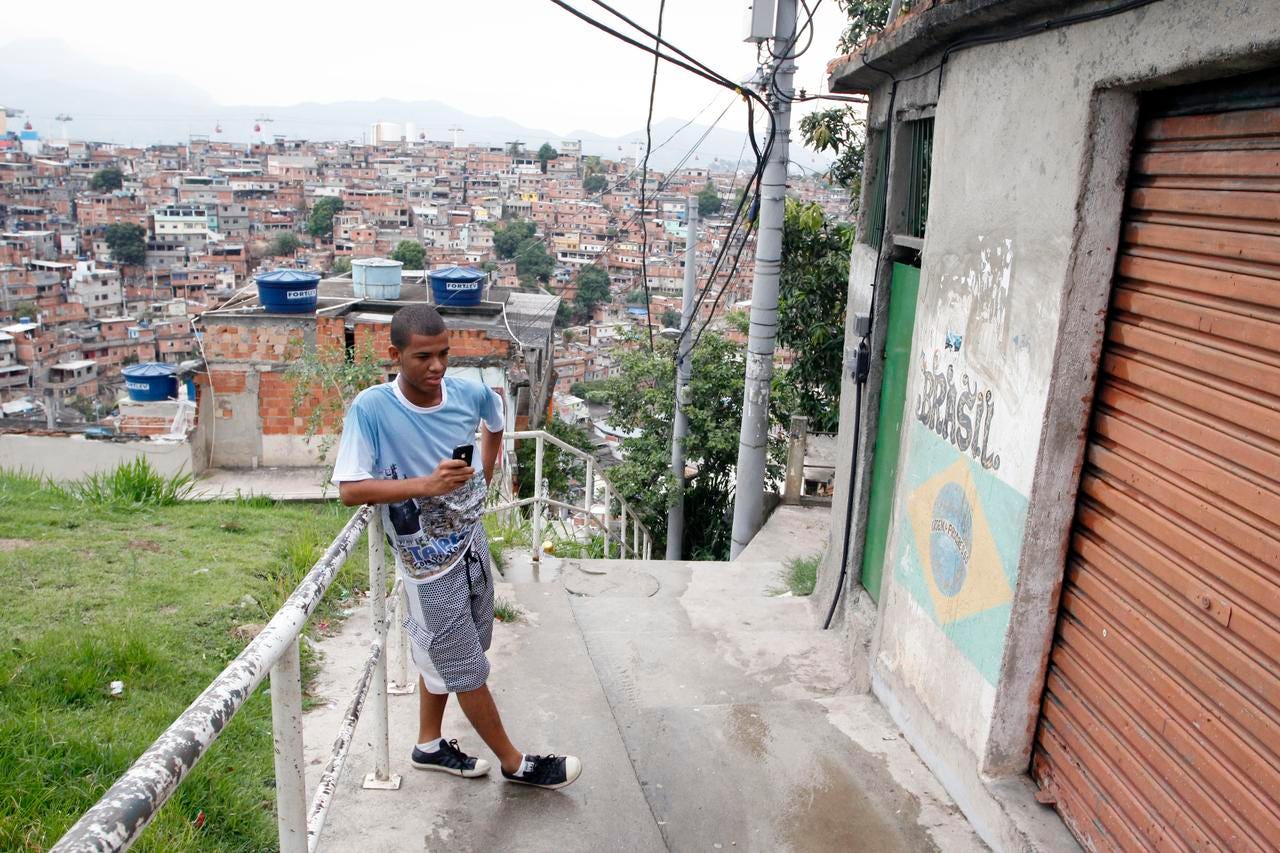Spokesman of the Slums
In the midst of fierce battles between drug kingpins and police, one tweeting teenager emerges as the most reliable reporter from inside Brazil’s infamous favelas.
In November 2010, a wave of violence hit Rio de Janeiro. Two of the city’s most powerful drug gangs had joined forces to protest against the state’s recent crackdown on organized crime. The Comando Vermelho and Amigos dos Amigos cartels had been squeezed out of their strongholds in the city’s southern zone, where they catered to wealthy narcotics consumers in beachfront condominiums. The cleanup was part of the city’s plan to increase security ahead of the 2014 FIFA World Cup and the 2016 Summer Olympics. The gangs responded by torching cars and public buses for several consecutive days during rush-hour traffic, causing massive chaos. There were many violent shootouts between uniformed officers and dealers. In one week, more than thirty people were killed. It was one of the most terrifying periods of Rene Silva’s young life, and also when he became a star.
Keep reading with a 7-day free trial
Subscribe to Narratively to keep reading this post and get 7 days of free access to the full post archives.




